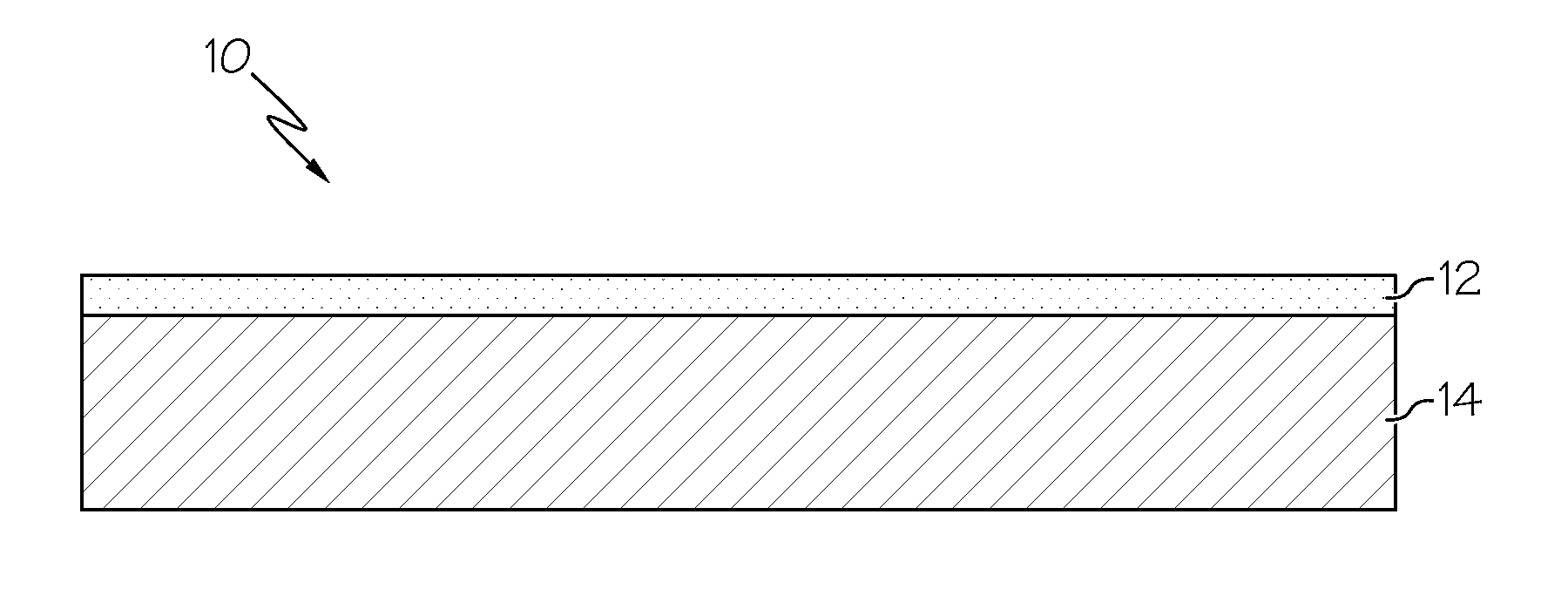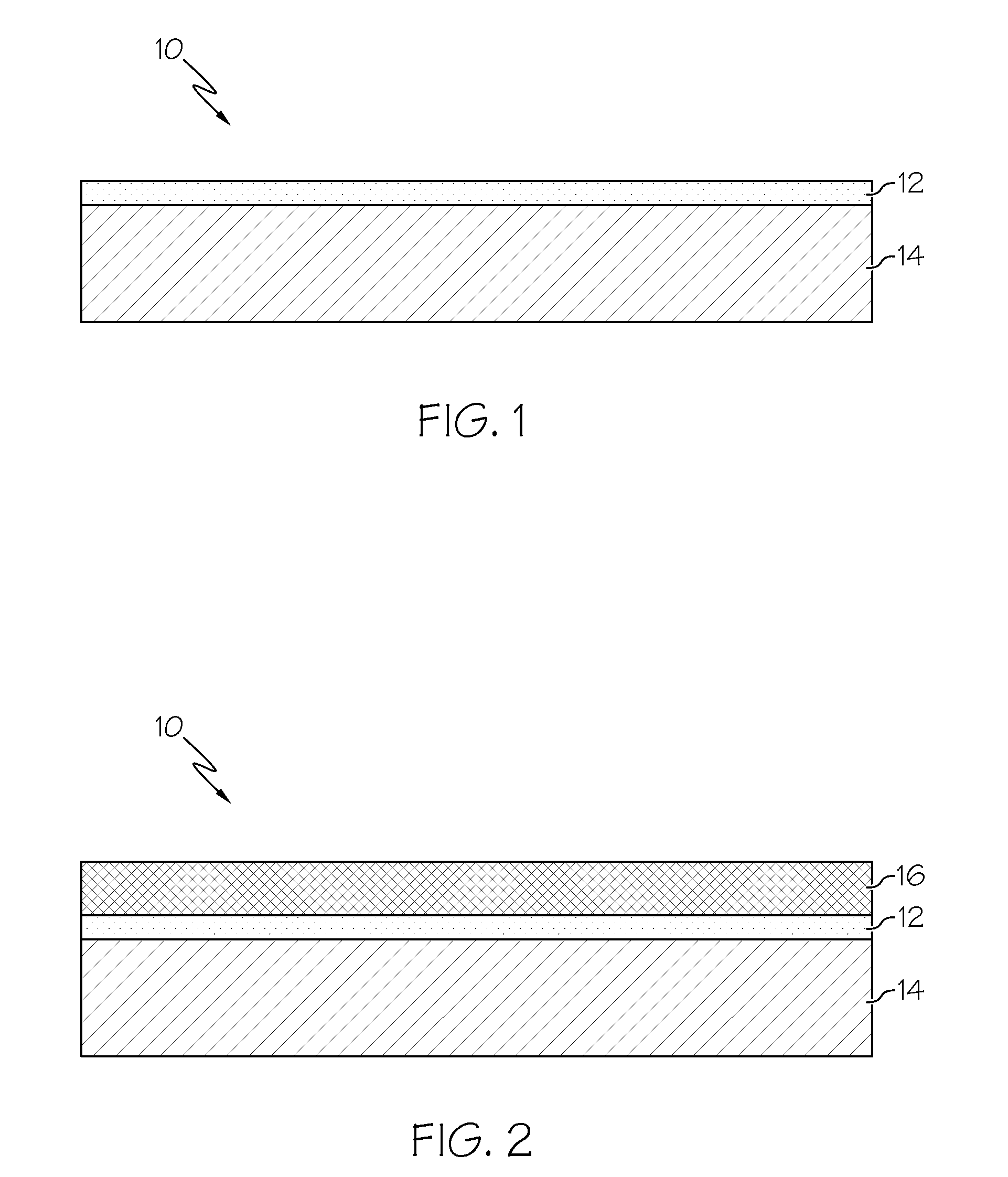Three-way catalyst comprising mixture of nickel and copper
a three-way catalyst and mixture technology, applied in metal/metal-oxide/metal-hydroxide catalysts, physical/chemical process catalysts, separation processes, etc., can solve the problems of insufficient oxygen for the oxidation of hc and co, conventional cerium-based oxides, etc., to achieve enhanced oxygen storage capacity, reduce carbon monoxide, and reduce hydrocarbon emissions
- Summary
- Abstract
- Description
- Claims
- Application Information
AI Technical Summary
Benefits of technology
Problems solved by technology
Method used
Image
Examples
example 1
[0058]A three-way catalyst was prepared by dissolving a Ni compound and a Cu compound into distilled water with vigorous agitation to ensure homogeneous mixing of Ni and Cu. The catalyst (Catalyst III) was prepared with a Ni / Cu weight ratio of 94:6, and contained a homogeneous mixture of 9.517×10−2 g Ni and 5.936×10−3 g Cu per gram of solution (formed from nickel nitrate and copper nitrate). The solution was applied to a cordierite honeycomb at 2.14 g-solution per in3-honeycomb. The wetted cordierite sample was dried at 150° C. for about 1 hour and then calcined at 600° C. for about 1 hour. The process of the wetting, drying, and calcining was repeated twice. The resulting Catalyst III contained 11 wt % of (Ni+Cu) with a Ni / Cu ratio of 94:6.
[0059]The same process was utilized to prepare other Cu-promoted Ni catalysts with various Ni / Cu ratios using solutions of different Ni and Cu concentrations. As shown in Table 1, some Cu-promoted Ni catalysts had Ni / Cu weight ratios ranging from...
example 2
Promotion of CO-Removal by Cu for Ni-Based Catalysts
[0061]A three-way catalyst containing copper and nickel from Example 1 was tested for CO removal and was compared with catalysts which contained only nickel. To evaluate the efficiencies for comparison, a catalyst of 1″L×¾″D size was placed inside a quartz reactor of a flow reactor system with a total flow of 3 l / min containing 10% H2O. The catalyst sample was oxidized in 0.5% O2 at 600° C. prior to evaluation. At the measurement temperature, a pulse of 1% CO was added into the gas mixture through the catalyst. The conversion of CO in 10% H2O to CO2 and / or H2 was determined. The results of CO-pulse at 600° C. over Catalyst I (as shown in FIG. 5A) slowed 100% CO conversion. The result over Catalyst II (FIG. 5B) also showed 100% CO conversion but with a shorter initiation period. As can be seen, the addition of a small amount of Cu to the Ni-based catalyst (Catalyst II with Ni / Cu ratio of 99:1) resulted in an improvement in CO remova...
example 3
CO or NO Removal in Simulated Vehicle Exhausts Over (Ni—Cu) Catalysts
[0065]The examples from Table 2 were further evaluated for the rate of removing pollutants in vehicle exhausts on a pulse-flame combustor (pulsator). Catalysts of
[0066]0.40 in3 size were evaluated for CO conversion efficiency and oxygen storage capacity (OSC) under fresh conditions and following simulated vehicle aging on a pulsator which combusts fuel to generate a simulated vehicle exhaust. The aging cycle in this example was designed to mimic the harshest in-use vehicle environment for this technology (close-coupled to the engine). Pulsator aging was performed by placing the samples into the pulsator-generated exhaust gas stream behind a close-coupled conventional three-way catalyst. The pulsator exhaust was continuously cycled between lean and rich air-fuel conditions at an exponentially weighted temperature of 910° C. in order to accelerate the aging process. The accelerated aging time to simulate 120,000 vehi...
PUM
| Property | Measurement | Unit |
|---|---|---|
| temperature | aaaaa | aaaaa |
| temperature | aaaaa | aaaaa |
| temperature | aaaaa | aaaaa |
Abstract
Description
Claims
Application Information
 Login to View More
Login to View More - R&D
- Intellectual Property
- Life Sciences
- Materials
- Tech Scout
- Unparalleled Data Quality
- Higher Quality Content
- 60% Fewer Hallucinations
Browse by: Latest US Patents, China's latest patents, Technical Efficacy Thesaurus, Application Domain, Technology Topic, Popular Technical Reports.
© 2025 PatSnap. All rights reserved.Legal|Privacy policy|Modern Slavery Act Transparency Statement|Sitemap|About US| Contact US: help@patsnap.com



